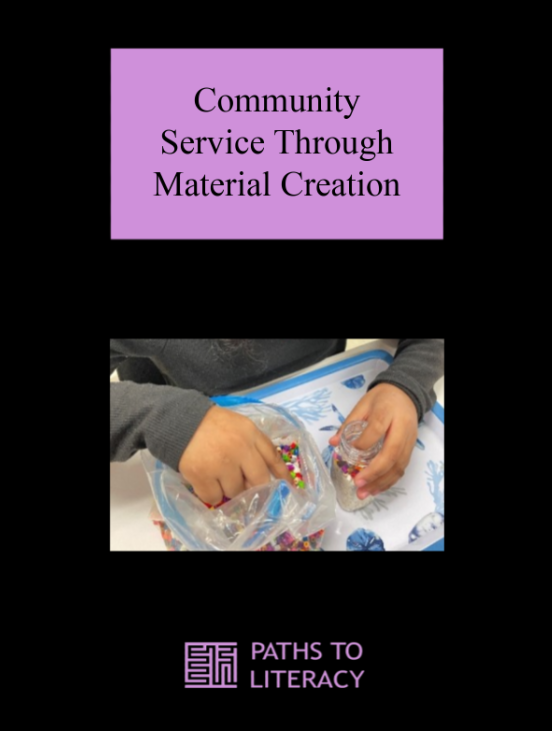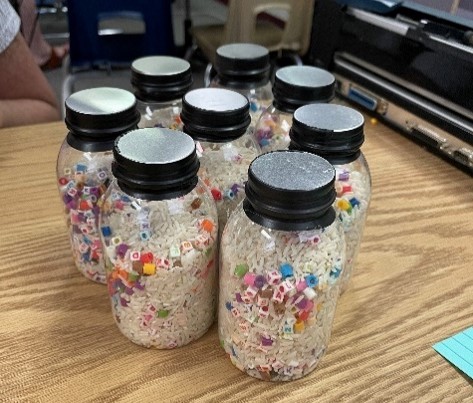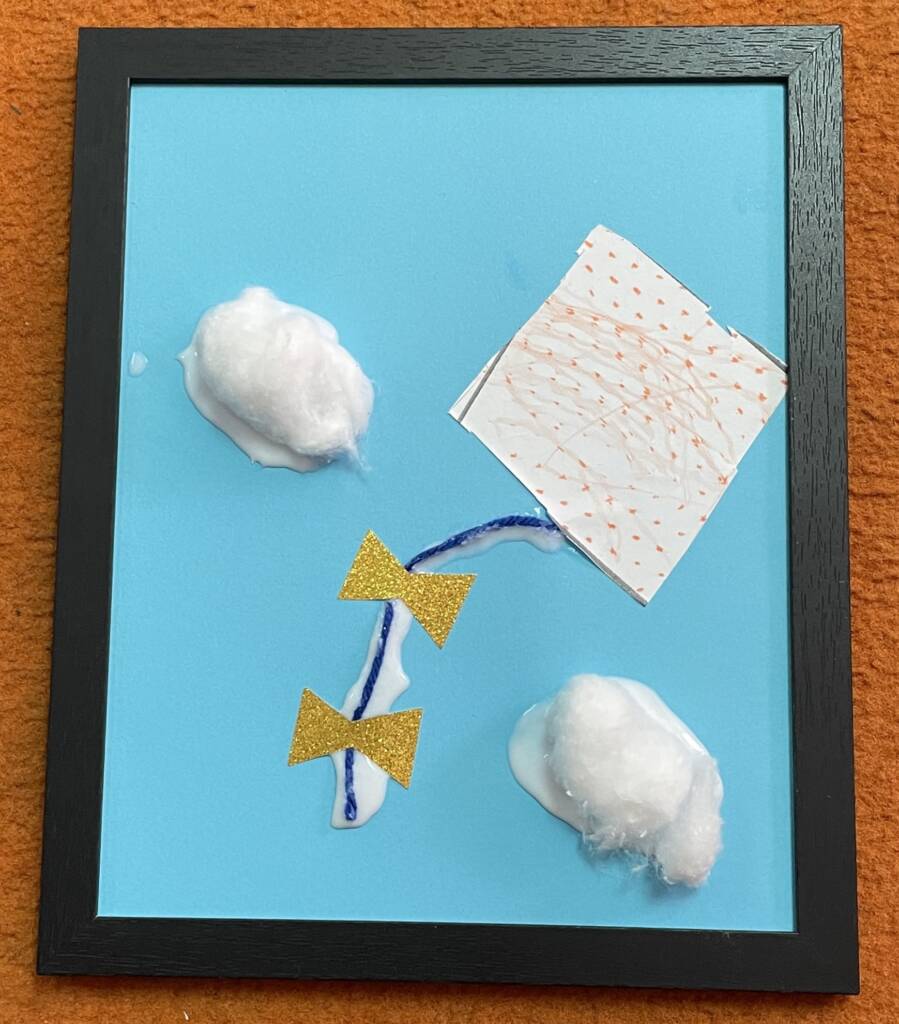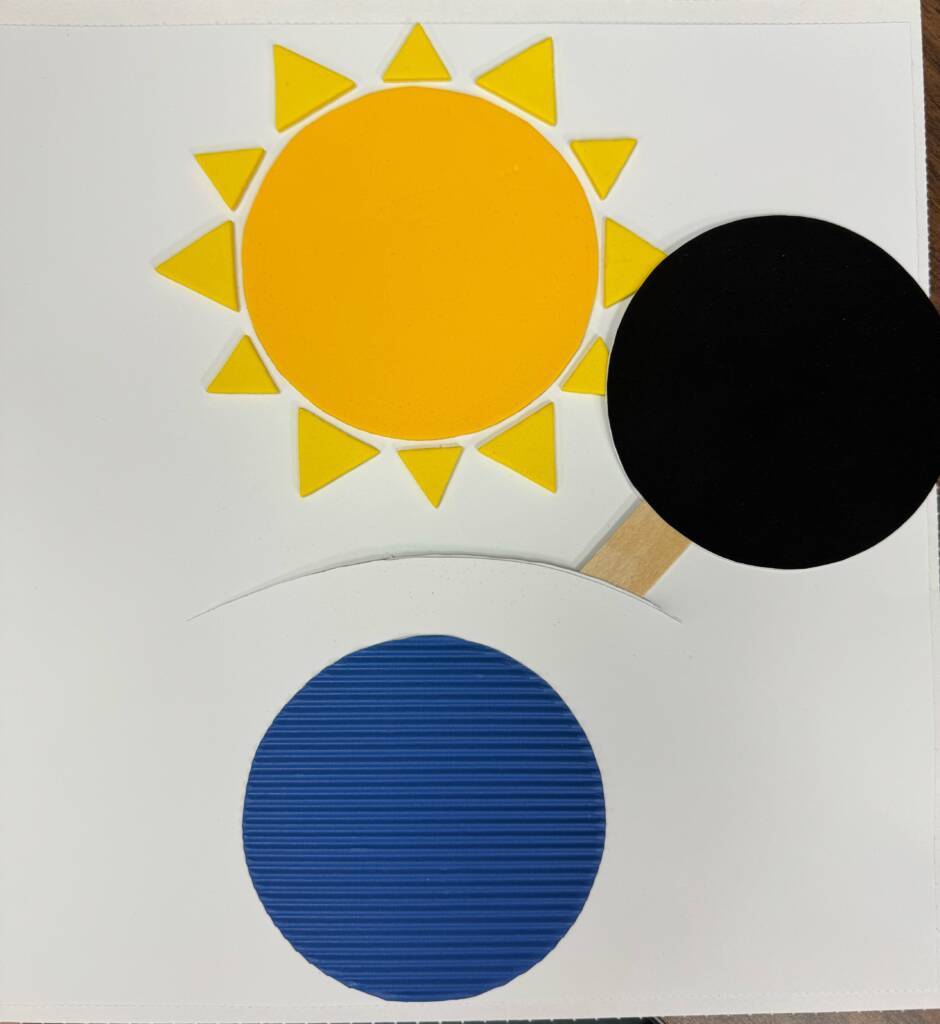Over the summer I attended a training (Beat the Heat at Region 13 in Austin, Texas) where there was a make and take. One of the items to make was rice sensory bottles. While making one, I immediately started planning how my students in a high school life skills classroom could create these for others as part of their community service projects I have them do, as well as a career exploration activity.
The rice was put in a large bowl and the students were provided a scoop to use with the rice. They had to use both hands together to complete the task. One hand held the bottle while the other scooped the rice into the bottle. They used their index finger of the hand holding the bottle to determine how much rice was in the bottle to help them determine when to stop. By using the bowl, we discovered we made less of a mess.
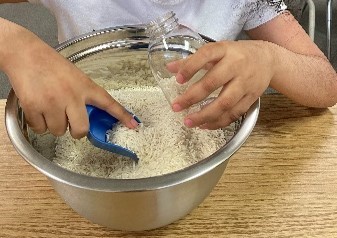
When moving to the beads, we used a measuring spoon. The students were able to choose what size measuring spoon they wanted to use and they used their best judgment on how many beads to put in the bottles. This was a little more messy, so we added a tray under the work area. We used two different types of beads. One set was small alphabet beads (White Letter Beads) and the other set was “fuse” type beads (Funfusion-Bead-Multicolor). Again, the students used their fingers to ensure there was still room at the top before sealing the bottles.
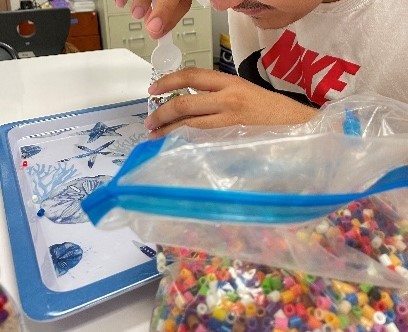
I had the students put the lids on the bottles and do test shakes to see if they made a sound, could feel some feedback in their hands from shaking the bottle, and to help mix the items. Once the students gave me the go ahead, I had them remove the lids so I can apply the hot glue and then wrap the bottles in the black electrical tape. The tape is soon to be their job as well with more practice.
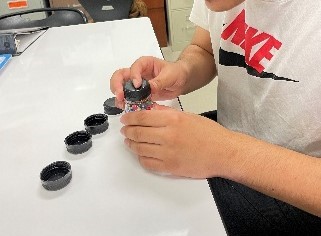
This activity is not just vocational or community service. I am using their cooking goals on this as well. The classroom teacher and I teamed up to write a collaborative goal to meet the cooking needs of the students we share. Since we didn’t work on spreading or mixing, those goals were omitted so you can see the goal we worked on:
- By January 2024, when given adapted/non-adapted kitchen utensils, auditory directions and cues from staff, STUDENT will complete simple recipes with 70% mastery for 3 out of 5 opportunities (VI Supported).
- By January 2024, while assisting with making a food item, STUDENT will measure liquids/solids using measuring cups and measuring spoons with support with 70% accuracy.
After completing a job, the students were asked different questions about their work experience. Here’s a few examples:
- What did you like/dislike about the job?
- Is this a type of job you’d like to do after high school?
- Did you like working with a peer? Or do you prefer working alone?
The following instructions for making the rice sensory bottles are not my own. These are the directions from the Make and Take I attended. The directions were easy for me to emboss in braille or enlarge for my students to read. I had a finished bottle that I had made at the Make and Take to share with the students to see what a finished product looked/sounded like.
Rice Sensory Bottle Instructions
Materials Needed:
- 1 clear plastic bottle
- Rice
- Beads
- Hot glue and hot glue gun
- Electrical tape
Directions:
- Open the bottle and fill it with rice, leaving about an inch of space at the top.
- Choose an assortment of beads and add them to the bottle.
- Screw the lid back on the bottle. Make sure that when you move the bottle there is not too much rice to where the contents can’t move, but also not so little that there is too much extra space.
- Open the lid and use the hot glue gun to put glue all around the grooves of the bottle top. Screw the lid on immediately.
- Use electrical tape to wrap around the entire lid and a small portion of the bottle top.
The students have received thank you cards for their work from the teachers and therapists who have asked them to make the rice sensory bottles for them. This has been a motivator for them. I’ve enlarged the cards or put braille to the cards where needed.
